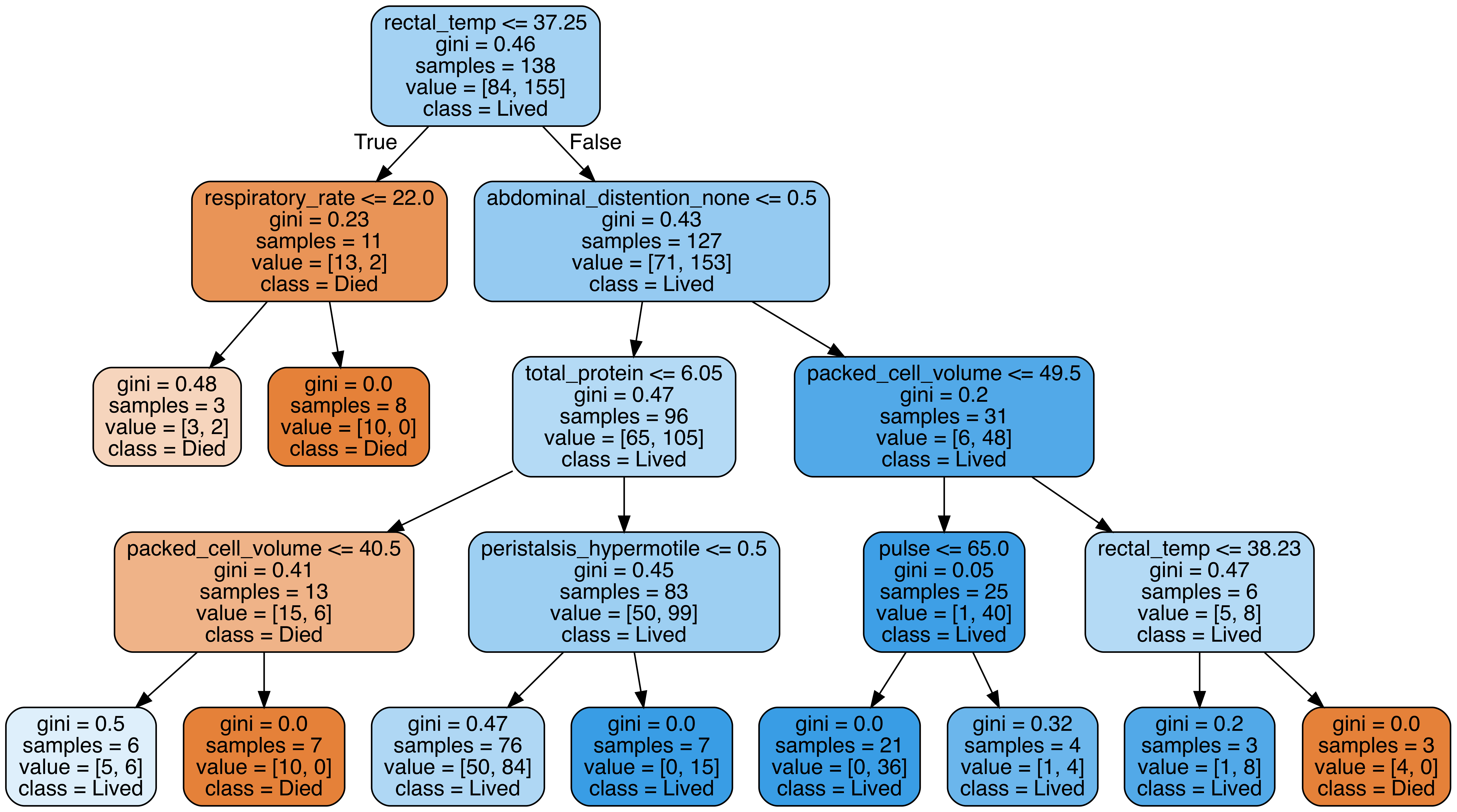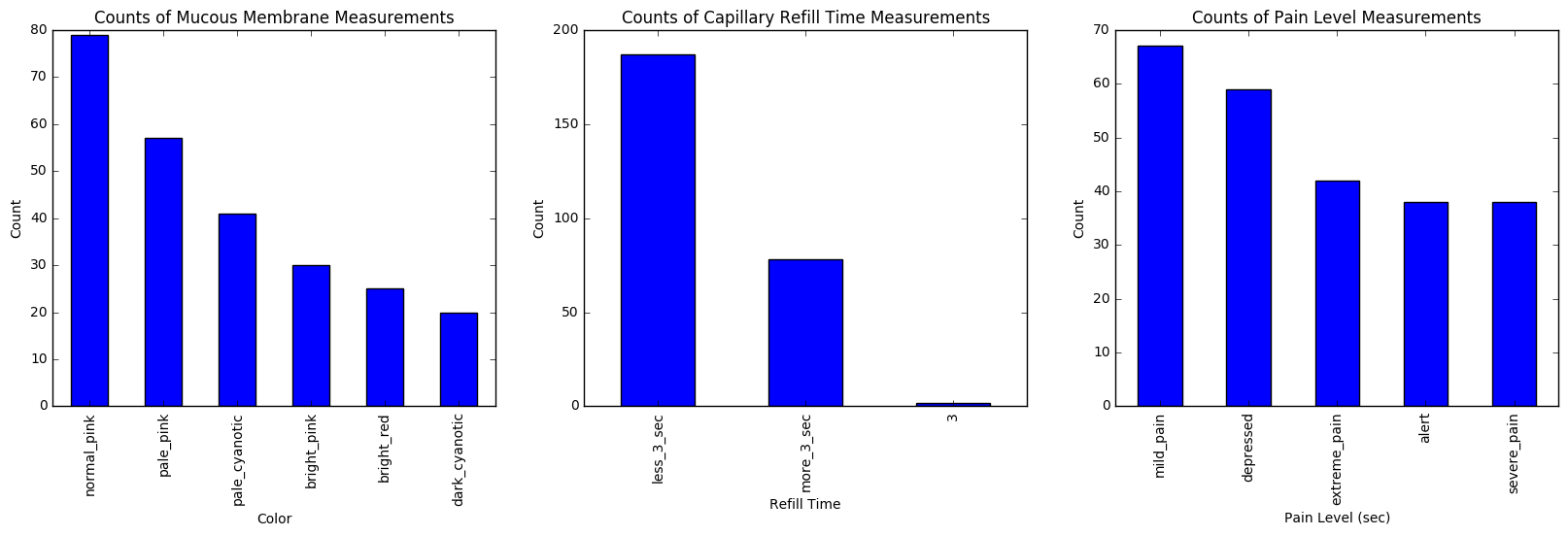DISCLAIMER: I am not a veterinarian! Merely a horse lover and machine learning enthusiast. PLEASE do not take any of the information presented in this blog post as veterinary advice, and ALWAYS consult with your veterinarian if you are concerned that your horse (or a horse under your care) may be experiencing colic. I am merely a data nerd with a passion for horses!
Colic is a condition of gastrointestinal upset or abdominal pain in horses. Colic is one of the worst nightmares of any horse owner. Symptoms of colic can include decreased appetite, little to no gut sounds, restlessness, obvious discomfort, pacing, rolling, and kicking at the abdomen. In more severe cases, horses can become violent in their movements or display more severe indications of distress, such as an elevated heart rate and respiratory rate, or other abnormal vital signs.
Colic can have a variety of causes, some of which are much more serious than others. For example: abdominal pain can be the result of gassiness, or "gas colic", which is rarely serious and usually resolves on its own. On the other hand, some types of colic, such as "torsion colic" (where the intestines are twisted, cutting off blood flow) can be very serious and require surgery to resolve.
Still other types, such as "impaction colic" (where the intestine of the horse is blocked by something, sometimes a foreign body) can go either way, depending on a variety of factors. It's important to remember that the owner cannot always know what type of colic a horse is experiencing, which is why it is important to consult a veterinarian who will likely collect a variety of health parameter measurements before making a recommendation for treatment.
In the most mild cases, colic can resolve on its own with or without medical attention. In more severe cases, colic can require invasive and expensive surgery to resolve, and this isn't always feasible or successful, especially in older or weaker horses. It is valuable to understand the signs of colic, particularly those which are associated with the most severe cases, and in relation to normal, healthy levels for a horse.
The Horse Colic Dataset, available from the UC Irvine machine learning archives, contains a variety of data for nearly 300 cases of horse colic, including cases which resolved with or without surgical intervention, and cases which resulted in death or euthanization. In cases where the horses did not survive, autopsies were performed to determine if the colic would have required surgery or not.
Using a machine learning classification technique called "Random Forest Classification", which uses multiple "Decision Tree" classifiers under the hood, we can explore the data in this dataset to attempt to answer two questions of particular interest in any case of colic. The first question of interest is: Given the health parameters, is this horse likely to require surgery to recover? The second question of interest is: Given the health parameters, is this horse likely to survive? Finally, the third question of interest which can be answered without machine learning is: we can take a look at the ranges of some easily measured vital signs present in the data to get a feeling for how they compare to healthy levels.
For the first question we researched, the Random Forest Classifier was able to predict whether a horse would require surgery with ~70-80% accuracy. To get a feel for the features being used to make such a classification, one of the Decision Trees which makes up the Random Forest Classifier was graphically represented, and we can see that one of the strongest indicators that a horse would require surgery was the absence of normal feces:
This is certainly consistent with what a horse owner might expect! If the horse's digestive system is still able to effectively pass manure, the colic is not likely to be one of the more severe types of colic, such as an impaction or torsion colic, which are the types most likely to require surgery.
For the next question researched, another Random Forest Classifier was used, trained separately to be able to predict whether a horse would survive the colic with ~70-80% accuracy again. Once again, a visualization was used, and in this case we can see that rectal temperature was one of the most important predictive factors:
Once again, this jives with what an owner might expect, given that an elevated temperature could indicate complications on top of the colic which will not be resolved with medical treatment alone.
Finally, six of the most commonly measured health parameters by owners were plotted in order to visualize the ranges present in this dataset, for context:
In the graphs of the numeric features, we can see roughly normal or skewed normal distributions of values for rectal temperature, pulse and respiratory rate. The peak of the rectal temperature graph is at the high end of normal values (38.5 C where normal values are 37.5 C to 38.5 C). The pulse histogram shows substantial skew to the elevated side, with the peak around 50 BPM where a normal value for resting heart rate is closer to 32-36 BPM. Finally, the respiratory rate histogram also shows elevation above normal, with the peak around 30 breaths per minute where a healthy respiratory rate is closer to 12 breaths per minute.
From the graphs of the categorical features, we can see that the largest group of horses had normal mucous membrane coloring, although the majority had either pale, bright, or dark mucous membranes, with more horses showing pale membranes than bright or dark membranes, and the least horses showing dark cyanotic membranes. We can also see from the graphic that the majority of horses had normal capillary refill time (less than 3 seconds), but approximately one third had abnormally long refill times of greater than 3 seconds. We can also see that the largest group of horses had only mild pain, and another substantial group were "alert", but that the majority of horses displayed extreme pain, severe pain, or showed outward signs of being depressed, none of which are normal.
Colic is a scary situation for any horse owner or horse professional! The more information we have about colic cases, the more armed we are with knowledge to help us take care of our beloved, four-legged friends. I hope you've enjoyed reading about my explorations of this dataset, and perhaps I've inspired you to take a data-driven approach to learning about something you are passionate about!




